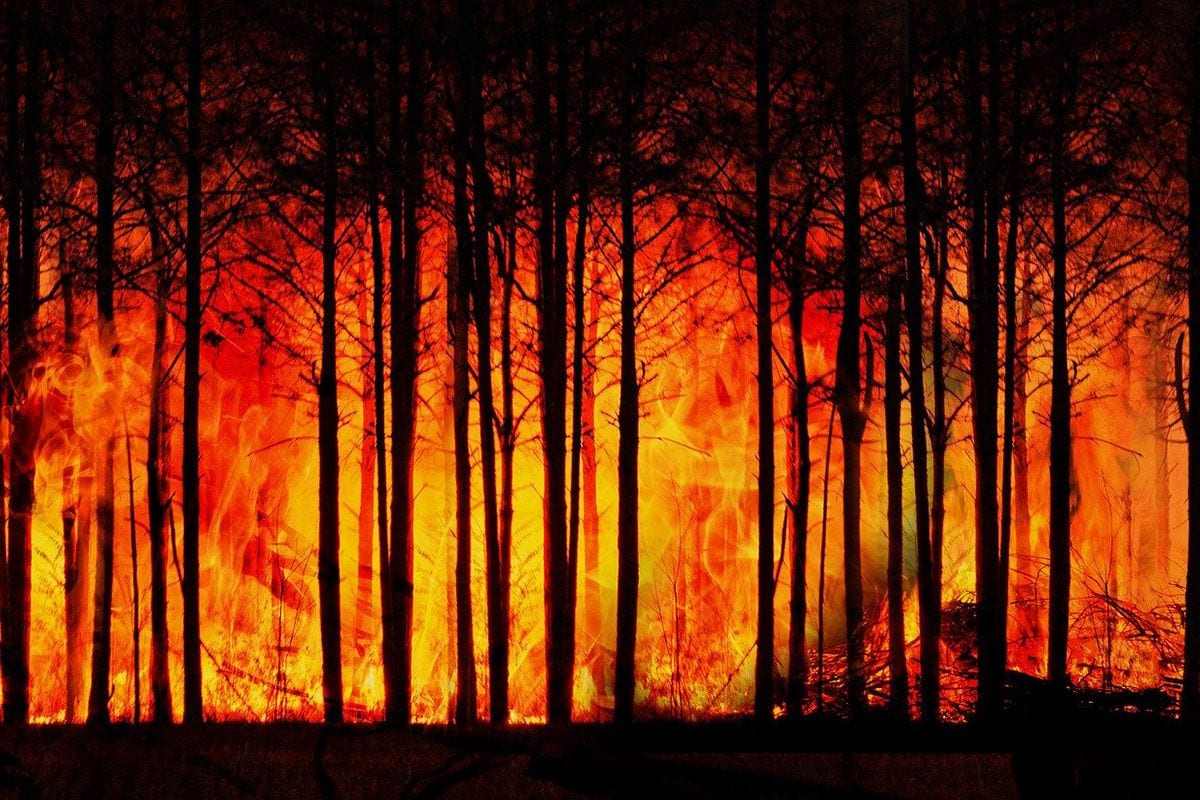
My housecat enjoys a special kind of self-satisfaction. She awakes from a warm, engrossing bed (her own or mine depending on how cold the night air proved itself to be) to crawl closer to me, snuggling against me for caresses and comfort. Having sated herself of affection, she takes but a few steps toward the kitchen where she finds fresh water and food awaiting the first inkling of a pang of hunger. When she must heed the call of nature, her litter stands by, clean and discreetly positioned in a closet, where she can attend to her business without interruption or embarrassment.
She has her favorite armchair (which, not coincidentally, I suspect, happens to also be my favorite) and she has carved the legs and the armrests in the peculiar patterns of her sculptural dreams. Not that she need resort to destroying the furniture; the apartment includes a much-loved scratching post and a few choice toys rendered in the shapes of traditional cat foes: mice and birds. She has her preferred spot on the sofa (next to mine), her favorite window that receives the morning sun, her favorite window for the evening sun, and a long hallway in which to perform her crazed rendition of the Cat Olympics, where she runs full tilt down the hall, leaps up, and catapults herself from a wall—the source of great joy for her and minor consternation for me (owing to the noise and the dirty pawprints on the wall).
My cat would be fully justified in thinking precisely what she appears to think: that her world is ordered (by me, in this case) for her satisfaction and well-being. She knows each nook and cranny of the apartment. She knows where things belong and when they appear to be out of order, she has confidence that they will once again be restored to order. Her world doesn’t present much in the way of radical change; the apartment is as it has been for the majority of her life. She seems to feel that she has attained a certain mastery of her domain and her world (my apartment) comports to her affective confidence. “Affective” in that she need not think about such mastery, she lives and experiences it; it is ingrained in the way in which she moves through her world.
Hand in Water by TheDigital Artist (Pixabay License / Pixabay)
Climate science strongly insists that our world—not simply the “human” world of culture but rather the world we share with all existing creatures and objects—is in crisis, indeed on the point of collapse. And yet many people, including both climate change deniers and many who fervently believe the findings of climate science, share the affective confidence of my cat.
We assume that the world is ordered in such a manner that it is open to our attempts at mastery (through knowledge and through technological enterprise), that it is peculiarly available to humans in particular (human exceptionalism). We think that planetary change occurs slowly when left to its own devices (planetary gradualism), and that the current crisis (or near-crisis, or however an individual might characterize the situation in thought) can be redirected entirely by redirecting our impact on the environment (e.g., the oft-assumed parallelism between emissions and temperature rise). Our lives, we believe, are fairly insular in that social circumstances are reducible to purely social causes (“sociocentrism”) and that, ultimately, the world is perfectly created for our comfort. Or perhaps we have perfectly evolved relative to the world, so that we are accommodated by its offerings.
As William E. Connolly reiterates throughout his new book Climate Machines, Fascist Drives, and Truth, our misplaced confidence in the planet as a stable environment that changes with glacial slowness and graciously accommodates our needs for both subsistence and knowledge. That is; Earth has a seeming openness to our understanding as we gradually develop increasingly precise technologies for coming to grips with its underlying static truth. This has led us into a dangerous complacency on the one hand (climate denial) and an assurance that we can fix our transgressions by merely reversing them on the other (emissions and pollution limits as the primary engine toward “saving” the planet).
In three challenging essays—at times inspiringly perspicacious, at others frustratingly imprecise—Connolly seeks to dismantle these assumptions by revealing to his readers a world utterly indifferent to the desires for knowledge and mastery brought to bear upon it by human beings. These essays are interventions designed to disrupt our affective confidence in the notion that the world offers us some distinctive and privileged place within it. Moreover, the essays present the world and its climate as given not to simple stability, but rather brimming with a host of amplifiers and triggers, forces and agents, irruptions and disturbances that create immediate and irrevocable change. The seeming stasis or gradual alteration of the environment belies an underlying range of possibilities that promise a radical and unbidden overturning of the order of the world of our experience.
The first chapter considers the writings of Bernard Williams, Sophocles, and Mary Shelley as part of a “minor tradition” that challenges the notion of planetary gradualism. This minor tradition stands opposed to the major tradition of Plato, Kant, Hegel and other thinkers. Connolly claims that latter group assumed the world was “well disposed to our highest aims if we approach it through the right understandings, technologies, and/or spiritualities” (18). The writers of this minor tradition, on the contrary, saw humanity as caught within a world indifferent to human need and utterly resistant to human understanding.
In thinking his way through Sophocles, the philosopher Bernard Williams contrasts the ancient Greek playwright with Hegel. The latter sees the trajectory of the world as involving the gradual revelation of truth; moreover, the site of that revelation was to be philosophy. Hence, Hegel proposes a world that is necessarily comprehensible and open to human projects. Indeed, the progress of the world entails the progress of knowledge; in Hegel man and world relate harmoniously.
This is not the case, Williams argued, in Sophocles. The world is not only not predisposed toward human endeavor, it thwarts human enterprise. Our is not a world that comports to human capability and desire. While critics often read the incursions of natural disaster in Sophocles as deriving from the agency of the gods, Connolly builds on Williams’ understanding of Sophocles to suggest something much more pertinent to our current climatological dilemmas. The world, Connolly needs us to accept, is simply not open to our attempts to bring it under our control.
For Connolly, William’s insight has two major consequences that Connolly pursues through his interpretations of Sophocles and Mary Shelley’s Frankenstein: 1. despite the lack of harmony between human desire and the world at large, we are still radically entangled with that world and thus must find a way to live with and within that world; 2. we must come to understand the many ways in which the “temporal volatilities of the world” intersect with “the historical adventures of human cultures” (20).
Connolly believes that Sophocles was peculiarly suited to his insights into the volatile nature of the world in that Greece is near the site of a conjuncture where three tectonic plates push against each other. Sophocles, accustomed to environmental turbulence, uses this violent landscape as the setting for human tragedy; the imbalances of human endeavor play out in brutal counterpoint to the imbalances of the surrounding world. One must, Connolly insists, resist reading the irruptions of nature in these plays as symbolic representations of the character’s internal strife. They may be that also, but essentially they manifest a non-human agency that pursues its own trajectory, in no way cognizant of or concerned by human affairs. The world is not merely a theater for human endeavor and treating it as such played a large role in allowing us to reach our current environmental impasse.
Connolly asserts that Shelley’s Frankenstein explores the notion that our selves are not unified, nor can a self be reduced to a set of mental contents. The creature’s affections, abilities, and notions all derive from the “remains and traces of thought-imbued passion left behind in the dead adult brain implanted into its head and given life in its body” (28). These capacities and antecedent experiences are not the subject of recollection but are “embedded dispositions to feeling, judgment, and action.” Connolly reminds his readers that Erasmus Darwin (whose thinking was familiar to Shelley) saw evolution itself as a kind of abstract machine steeped in self-organizing processes and involving the “strivings of multiple intersecting entities” (31).
What this seems to mean for Connolly is that we do not occupy a stable identity from which to work on the world. Rather, we are an assemblage of “pluripotentialities” that eventuate in concrete acts, but those acts do not negate the nebulous remainders of those untaken possibilities. We are not simply what we have done; we are what we have done in the context of what we might have done. Connolly (following Erasmus Darwin) clearly sees the world as operating in a similar manner and this makes our imbrication with that world fantastically complex.
Indeed, recognizing the dissolution of the image of the unified self leads to a deconstruction of the sharp distinction between nature and culture, a deconstruction that Connolly finds in Shelley’s text. We are not removed from the world in the manner of a Cartesian split; we are involved in a corporeal and affective manner from the very start. Hence, “sociocentrism” (the tacit notion that social processes are always explained by recourse to a deeper social process) fails. For Connolly this means that pollution and other planetary crises cannot be ameliorated simply by altering human activities; natural amplifiers and forces contribute to (and sometimes initiate) the worsening of the climate. This is not to say, of course, in league with climate change deniers that humans have little to no impact on climate change, that our current crisis is simply the unfolding of natural forces and pressures. Rather, Connolly’s claim involves the recognition that just as there was no simple unidirectional way in which we arrived at the crisis, there is no one way in which we will advert that crisis.
Dead tree/ drought by geralt (Pixabay License / Pixabay)
The second essay, “The Anthropocene as Abstract Machine”, draws on writings of Giles Deleuze and Felix Guattari to suggest that the Anthropocene (the current geological era in which humanity has exercised the dominant influence on the climate) is an abstract, planetary time machine. In their nomenclature, an abstract machine is “a partially self-organizing cluster of heterogenous forces and agencies that feed upon and fuel each other, often accelerating as the diverse components become more densely imbricated” (6). An abstract machine can experience sharp and dramatic turns such as occurred when an asteroid impact and a volcanic eruption led to the demise of the dinosaurs.
Connolly quibbles with the very notion of an Anthropocene on two fronts. First, he cites relatively recent developments in geology and evolutionary studies that debunk the notion of planetary gradualism in order to counter the suggestion that planetary volatility is a recent development. Protracted periods of gradualism are punctured by relatively abrupt moments of radical change (see for example the theory of “punctured equilibrium” in the writings of Stephen Jay Gould).
Second, Connolly insists that it is not the case that humanity has become a geological force but rather that “state capitalism, socialism, and communism, organized around internally differentiated priorities of fossil extraction, productivism, and consumption abundance, became major geological forces by dint of their dominant institutionalizations and existential priorities” (46-47). Human endeavors are not the sole geological forces on the scene; rather human forces “spawn climate triggers that can become inflated or dampened by a variety of planetary forcings and self-organizing amplifiers” (47).
Hence, Connolly appropriately turns to Deleuze and Guattari to investigate the imbrications between human and nonhuman forces and agents. Their emphasis on flows and processes and their conceptualization of smooth versus striated spaces can be applied, according to Connolly, to current thinking about desertification, glacial flows, ocean currents, monsoons, and many other environmental phenomena that do not maintain a discrete identity and involve the entanglement of the human and nonhuman.
The third essay, “The Lure of Truth”, deals with how to discern truth in an era of “fake news” and the purportedly postmodern notion that we live in a post-truth era. Connolly seeks to justify the pursuit of truth without simply regressing into a neo-positivism that denies any imbrication between fact and theory. Neopositivists often support a correspondence theory of truth that downplays moments of real creativity (both human and non-human). Connolly finds an emphasis on creativity in the “process” theory deriving from Alfred North Whitehead. Whitehead proposes a coherence model of truth where fairly stable processes are punctuated by moments of genuine creativity.
To pursue this line of thinking, Connolly enacts a dialogue between two of his most notable influences: Michele Foucault and Whitehead. Or rather, the dialogue is between the personae of these thinkers, labelled “F” and “W”. In the dialogue, “F” and “W” are fully aware of each other’s work and the purported weaknesses in their own. In this manner, Connolly strives to use Foucault to shore up missed opportunities in Whitehead (and vice versa) in order to bring them closer to an adequate handling of truth in the context of planetary crisis.
Climate Machines, Fascist Drives, and Truth furthers the work Connolly has done in his previous recent books: Capitalism and Christianity, American Style (2008), Facing the Planetary (2017), and Aspirational Fascism (2017). That it enters into discussions Connolly initiated elsewhere contributes to the general weakness of this book as a stand-alone entity. I suppose I could be accused of tripping over Connolly’s insistence here on the lack of an integrated self—no one and no book stands alone. Fair enough. But in this case, one can’t help but feel like the most penetrating insights that arise in Climate Machines Fascist Drives, and Truth are asides that are more fully explored in the companion volumes.
There are several references to concrete data and concrete connections within the variegated relationships between human and nonhuman forces in the creation of our climate crisis, but none are discussed in sufficient depth to make them all that illuminating. Instead, we are given three different frameworks for thinking about the crisis without much in the way of an application of those frameworks. Hence, each chapter throws out intriguing sparks but none of them really catch fire.
Connolly’s discussion of Shelley rambles exceedingly. In considering potentialities, he constructs a rape scene in which the monster impregnates Frankenstein’s fiancée. Indeed, he continually returns to the sexual trysts that involved Shelley, her husband, Byron, and the others in Switzerland in the unseasonably cool summer of 1816. The most compelling portion of his reading of Frankenstein (the notion of the self as a contradictory intersection of embedded dispositions, discussed above) is buried within a great deal of less convincing material.
The second chapter, while making tantalizing reference to Connolly’s other work on Christianity, emergent fascism, and planetary change, really amounts to little more than a protracted foray into the terminology of Deleuze and Guattari. The third chapter is easily the most promising in its exploration of the relationship between creativity and truth. However, the conceit of a conversation between Foucault and Whitehead winds up working against it to a certain degree. Both personae really just end up sounding like Connolly himself as they recite many of the same talking points he has returned to again and again throughout the book.
In short, Climate Machines, Fascist Drives, and Truth is full of missed opportunities. It is better read in the context of Connolly’s other, very impressive, works. But even in that context, it fails to live up to the standards he set elsewhere.
- Climate Machines, Fascist Drives, and Truth: Amazon.co.uk: William ...
- Climate Machines, Fascist Drives, and Truth eBook: William E ...
- Climate Machines Fascist Drives and Truth
- Climate Machines, Fascist Drives, and Truth: William E. Connolly ...
- Climate Machines, Fascist Drives, and Truth - Duke University Press
- William E. Connolly | American political theorist | Britannica.com
- William E. Connolly
- Facing the Planetary - Duke University Press
- William E. Connolly
- William Connolly | Political Science | Johns Hopkins University
- William E. Connolly - Wikipedia



